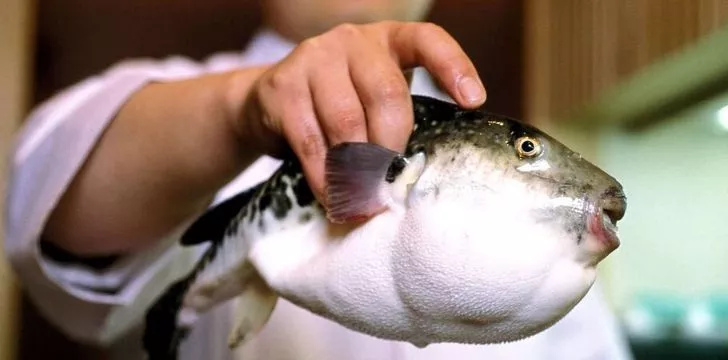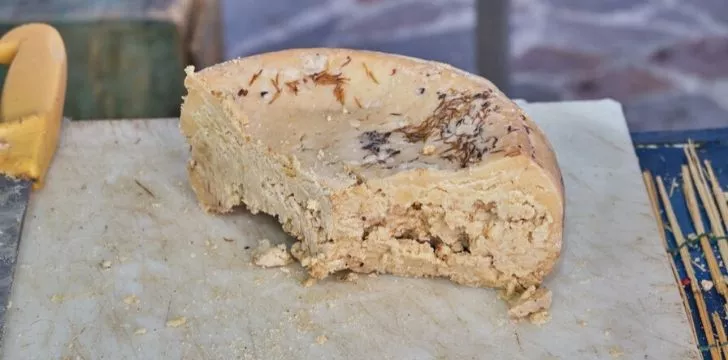It’s true we should all know a lot more about the foods we eat, but usually, we focus more on the fat content or the sugar levels, not whether consumption will harm or kill us.
There are however plenty of so-called foods that will do just that, from simply giving you stomach problems to being fatal.
Here we’re going to look at 5 of the world’s most deadly foods as well as some facts about each one.
Keep in mind, though, that this may not be a definitive list of any sequential order.
Fugu

Fugu, or the pufferfish, is often classed as the world’s most poisonous food. Although a delicacy in Japan, if incorrectly prepared, it can cause paralysis and asphyxiation.
The risk comes from a neurotoxin found in the fish’s organs, particularly its liver, known as tetrodotoxin.
Don’t worry, though; Japanese law regulates the preparation of fish in all restaurants, with chefs going through 3 or more years of rigorous training.
Many experienced and highly-regarded fugu chefs in Japan will apparently try to leave a small bit of tetrodotoxin so that when consumed, a tingling feeling will pass through the tongue.
Westerners or general adrenaline seekers often try fugu just for the experience. Still, if you want a safer bet, Shimonoseki, a city in Western Japan, has had to date no fugu-related deaths, whereas there are, in general, around 100 deaths a year.
Giant Bullfrog

The Giant Namibian Bullfrog or giant Pyxie is quite the delicacy in Namibia, often consumed as a celebratory dish, particularly by the Ovambo people.
The main problem with these bullfrogs lies in a toxin called Oshiketakata, found in young specimens.
Apparently, they are safe to eat after the ‘third rain’ or when there is excessive croaking and breeding happening.
The toxin causes painful urination, kidney failure, and even death.
These frogs, measuring just under 10 inches, are the largest in Namibia and will eat quite literally anything they can, from rats to reptiles and even other frogs.
The frogs have a shovel-like piece on each heel for burrowing into the ground using a shuffling, backward motion.
Ackee

The ackee, or Blighia sapida, is actually Jamaica’s national fruit and yet very dangerous.
The issue lies when the fruit is unripe as the pods inside contain a poison called hypoglycin, but when they turn red and open naturally, and the fruit is fully ripened, the yellow arilli are safe to eat.
The seeds are always toxic regardless of ripening, and consumption of the Ackee poison causes Jamaican Vomiting Sickness which can lead to death.
The scientific name apparently derives from the sailor who took the fruit in 1793 from the country to the Royal Botanical Gardens in Kew, England, Captain William Bligh, and the common name from the West African name Akye fufo.
Jamaican Vomiting Sickness was first labeled in 1904, and as we mentioned earlier is caused by Hypolgycin. This poison is named after the way it causes hypoglycemia, which is a severe lowering of blood sugar levels.
The mortality rate at one stage reached 80% before treatments were found. Now, the rate is much lower; from 1989-91, there were just six deaths.
Casu Marzu

This is a Sardinian sheep’s milk soft cheese that is left to ferment uncovered during its ‘ripening’ process so that flies are able to lay their eggs inside the cheese.
These eggs are responsible for the fermentation, or the maggots inside, to be exact.
The problem is that when the maggots inside the cheese are dead and are ingested, they can cause severe illness by damaging the intestinal walls.
Casu Marzu is one of the few foods that eye protection is recommended; the bugs can actually jump 6 inches upward when bothered.
The cheese is actually sold on the Italian black market as it’s banned in Italy and across the EU.
Cassava

Cassava is a root vegetable often known as tapioca, particularly in the US.
The root is grown mainly in Africa and South America.
The vegetable is used to make many things, including flour, stews, puddings, and even juice.
The leaves and the roots are high in hydrogen cyanide.
Cassava can be eaten, but only if properly prepared.
After rice and corn, the root of cassava actually has the 3rd highest levels of carbohydrates.
The cassava really is nature’s pocket knife; as well as being used for making food, it can also be used to make the biofuel ethanol.
The WHO says in Africa, 1 in every 5 people who suffer from cassava poisoning die.
So there we have it; of course, these aren’t all the poisonous foods in the world, and the order of these is particularly hard to specify as the levels of poison or fatality vary.
But fugu is definitely the most poisonous, and the others are without doubt in the top 10.
Poisonous is just the start of the murderer’s arsenal hiding in our fields, forests, and plantations. There are so many foods that are dangerous but not poisonous.
There are even numerous everyday foods that can be poisonous, at least to varying degrees; these include green potatoes and, of course, mushrooms.
So now I’ve made each and every reader, including myself, paranoid; just remember to be careful when it comes to new foods!
Be safe; Google it!


















